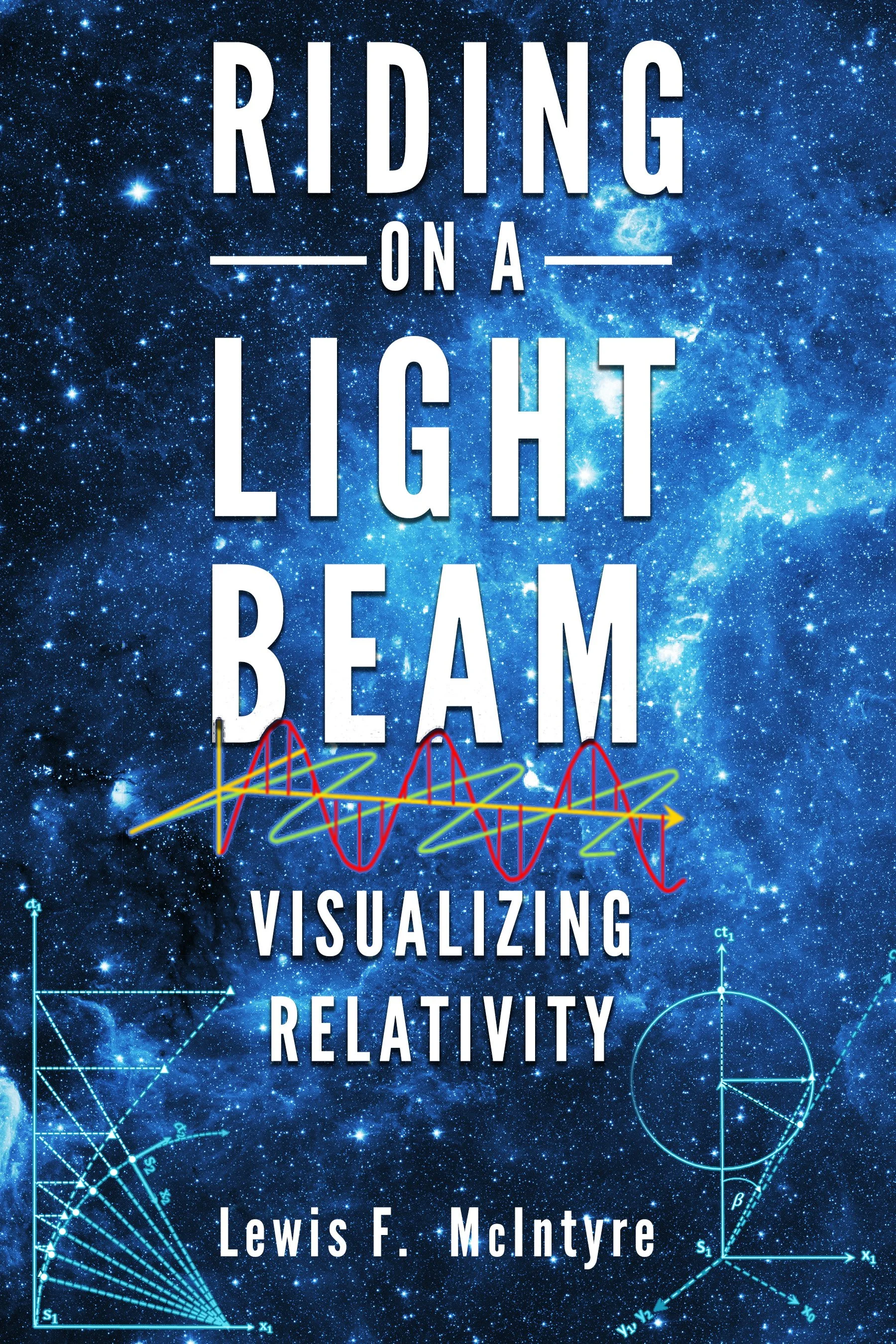Riding on a Light Beam
Visualizing Relativity
Riding on Light Beam provides a whole new approach to understanding the Special Theory of Relativity, one easily understood with no mathematics higher than high school trigonometry, requiring no prior knowledge of Einstein’s theory. The book is the end result of this engineer’s fifty years’ work to visually understand what the simple equations of the Special Theory are trying to tell me.
The Special Theory of Relativity consists of some relativity simple mathematical equations, all based on the Lorentz Transform, that relate the coordinates of a measurement in one reference frame to measurements on another. But that leaves many questions unanswered: why does relative motion affect measurements of time and space? Why does mass increase and clocks slow down with increasing velocity? And why can we not exceed the speed of light?
The key to understanding these questions has do with the fundamentals of measurement. All graphic solution to date have equated the measurements in two reference frames to be the same point, which seems intuitively obvious. But this forces the coordinate systems themselves to distort their clocks and rulers to accommodate the equations of the Lorentz Transform, which is not at all intuitive!
Let us examine how we determine that a moving object is “at” some location ct, x in our reference frame. we basically receive light from that object at our eyes, simultaneously with light from a fixed reference point of known distance x. We are are watching our object move along a ruler and at some point, we will see it cross the 2-inch mark, and we look at our watch to note the time. We know that it took some time for light from the event, the object crossing the two inch mark, to reach our eyes, and correct our time of observation to the time of the event by diving x by c, the speed of light, to determine ct, the time of the event.
What is fundamental here is that we have two distinct things, the event we are attempting to measure and our observation of that event, connected to our eyes by light. And anything which affects that light path will affect our measurement of the event. What affects that light path? Doppler shift, which is a function of our mutual velocity, and relates the time light actually left the object in motion to our time of receiving that light. But our fixed point x on our ruler is at rest with us, with unity Doppler shift. If we are receiving the light from our ruler and the object simultaneously, then light cannot have left the two simultaneously. It is not the time of light leaving the object that is affected by our mutual relative motion, but our time of observation and our ensuing measurement. And it is equally true for the object being observed: its measurement of us is Doppler-shifted to a measurement in its reference frame. Both of us see the other’s clocks running slow and rulers being shortened, but that is based on our measurements, just as two cars approaching each other will hear the other’s horn at a higher frequency, and for the same reason. And these measurement difference increase exponentially with increasing speed of relative motion.
Riding on a Light Beam made its debut in June of 2023. Included is a simple polar plot for download, and a video tutorial for how to use it


